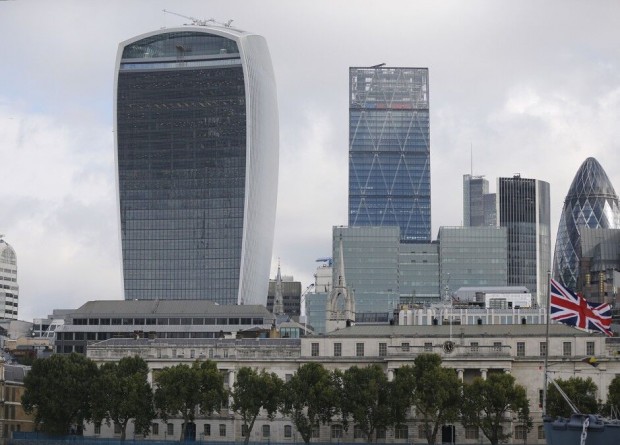The Walkie-Talkie, an infamous glass tower in London, gained sudden fame in 2013 for reflecting intense heat from the sun that was called 'Death Ray.' People noticed this heat reflection and even conducted experiments like frying eggs and parking cars where the sun's rays were concentrated, which resulted in melting some parts of the vehicle.

(Photo : Bloomberg/Frank Augstein)
London's Death Ray Tower
Rafael Viñoly, a renowned architect from around the world, is responsible for designing this building, a remarkable structure that features curved outside walls. Because of its peculiar design, the 38-story skyscraper constructed at 20 Fenchurch Street in the heart of London's financial district is commonly called 'the Walkie-Talkie' in the neighborhood.
However, the nature of that curvilinear shape is precisely what is causing the issue. The reflective glass covers the south-facing outer wall, and its concave shape concentrates sunlight onto a narrow spot, much like a magnifying glass does when directing sunbeams onto a superhot pinpoint of light.
In addition, local proprietors have raised concerns regarding the possibility of carpets catching fire and front doors shouldering. The restaurant's owner reportedly asserted that the slate tiles on his doorway had been shattered due to the heat.
Moreover, in 2013, Fryscraper rapidly rose to fame and became an overnight sensation. In a specific location south of the structure, Londoners and tourists alike were assembling to perform tests and experience the intensity of the 'death ray' on their flesh. As mentioned, Martin Lindsay contributed to the escalation of the frenzy; in less than two hours, his Jaguar XJ began to melt beneath the brightness of the reflected sun. He reportedly had parked it in the perfect position at the right time.
When Lindsay stated that the wing mirror, the panels, and the Jaguar badge melted and were deformed, he estimated that the damage was approximately €1,000, equivalent to almost $1,100. It didn't bother him as much that his car was damaged as the architect, builders, and investors put up a 38-story building worth €200 million or almost $215 million without thinking that something like this might happen.
Also Read: Reviving Ancient Techniques: How Raw Earth Construction is Shaping Europe's Sustainable Future
Building's Sky Garden
The garden is an excellent example of how the way that the capital of Britain is heading is being reflected. In the modern city of London, a 'public' garden may now refer to a small, private area confined between prestige businesses and subject to security measures. If Londoners were willing to disregard the construction of an unappealing new structure, it was not for the sake of a polished corporate entertainment venue that they were only reluctantly obliged to enter.
On the other hand, in response to the criticism leveled at the sky garden, city officials may take action. In the summer of 2015, the City of London Corporation announced that it was contemplating the possibility of ordering a significant redesign of the area to get it closer to the approved version. Nevertheless, when it comes to preserving the building's reputation, this is still only a tiny step in the right direction. Although Rafael Viñoly, the architect of the Walkie-Talkie, has not fared well, most of the criticism has been directed toward the planners who allowed it to get through without being noticed.
Related Article: Swiss Rail Operator Faces Backlash After Blowing Up Historic Bridge Without Proper Permits







